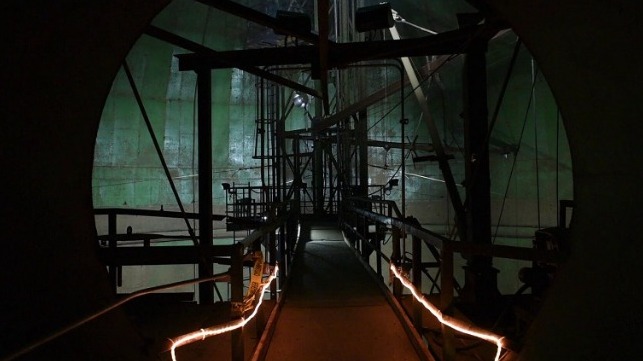Hearing Upholds State Order to Drain Strategic U.S. Navy Fuel Facility

After an appeals hearing, Hawaii's deputy attorney general has affirmed a state order requiring the U.S. Navy to drain its Red Hill tank farm on the outskirts of Honolulu, citing its age and environmental risk. The facility recently released 17,000 gallons of fuel/water mixture from a drain line, resulting in the contamination of a water system that supplies 93,000 servicemembers and their families. About 4,000 personnel have been relocated to temporary housing, and the U.S. Army has stepped up to provide short-term food and drinking water supplies.
Following the spill, Hawaiian Gov. David Ige and his health department ordered the Navy to close and drain the facility until it is inspected and proven safe.
"The weight of the evidence establishes that the Red Hill Facility, as currently situated, is a metaphorical ticking timebomb located 100 feet above the most important aquifer on Hawaii’s most populous island," wrote Deputy Attorney General David Day in a proposed order. "The Navy lacks the ability to control the substantial risks associated with the Red Hill Facility, as currently situated . . . The evidence shows that the Red Hill Facility is simply too old, too poorly designed, too difficult to maintain, too difficult to inspect, along with being too large to prevent future releases."
Day's recommendation has been passed to the deputy director of Hawaii's Department of Health, Marian Tsuji, who is responsible for making a final decision on the appeal.
Troubled waters
The 13-hour hearing did not go smoothly for the Navy. An expert consultant from class society DNV, retained by the Honolulu Board of Water Supply (BWS) to evaluate the site, testified that Red Hill is "entering an end of life phase" and that the service's SMS approach is out of date by commercial standards.
David Norfleet, head of incident investigations for DNV Oil & Gas, testified that the Navy's existing spill risk assessment was based on low assumptions. From DNV's own analysis of the historical record, Norfleet estimated that Red Hill has sustained 76 leaks over 70 years, releasing a cumulative 200,000 gallons of fuel over time. Further, he suggested that the Navy's willingness to blame a spill on a single "human error" is out of date, reflective of a 1980s-era safety management standard that private industry has long since left behind.
The Navy also found itself in public-relations hot water when a senior representative, Deputy Assistant Navy Secretary James Balocki, told the hearing that the contamination event was "not a crisis."
"[This is] an urgent and compelling situation. Not a crisis," Balocki said. "I’ve been in combat so I know what crisis looks like. "
His comments drew the attention of Hawaii Congressman Kai Kahele, who complained to Balocki's superiors in an open letter. The Navy formally apologized, with Under Secretary Meredith Berger writing back that the service was "sincerely sorry" for Balocki's tone.
In testimony, Balocki was contradicted by Pacific Fleet Surgeon Capt. Michael McGinnis, who described the situation as a "public health crisis" with unknown long-term effects.
Federal oversight
The state proceeding is one of several signs that Red Hill's future may be in civilian hands. Following a request from Hawaii's congressional delegation, the Pentagon's Inspector General has opened an inquiry into the circumstances of the spill and the Navy's response. The Honolulu Board of Water Supply (BWS) has also appealed directly to the White House, asking President Joe Biden to order the Navy to drain Red Hill.
In its letter, the BWS cited the risk to Hawaii's health and economy. The agency has already closed three of its own wells as a precautionary measure, and it is now warning local building developers that new structures in some areas may not be eligible for water connection permits. The BWS says that the possibility that fuel contamination might restrict future water availability means that it may have to effectively limit new development.
"The halting of water allocations would mean developers have invested huge dollars on projects that can’t be completed, sold/closed on - a financial disaster for those businesses," the Building Industry Association of Hawaii told local media. "It would also result in loss of construction jobs and materials sales."
